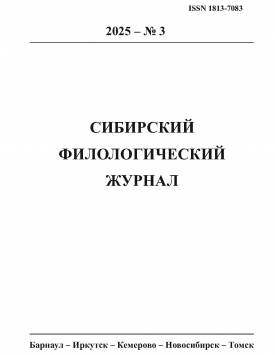Prosodic features of written sentences depending on formal characteristics of their punctuation marks: a case study of semicolons, colons, and dashes
This paper examines the intonational characteristics of contexts featuring semicolons, colons, and dashes, focusing on their natural prosodic realization in speech. The study involves non-professional speakers, with punctuation marks considered in terms of their formal attributes. The functioning of a punctuation mark in a graphic text is presented as a set of intonation features of its acoustic (speech) interpretation. Account is taken of key intonation parameters, such as the tonal movement preceding punctuation marks and the duration of any pause at their location. A contrast is noted between vertical and horizontal signs regarding the nature of the fundamental tone movement. The experimental research has revealed a correlation between the punctuation design of textual units and intonation interpretation. Semicolons and colons have been found to be typically characterized by a tonal lowering on the final stressed syllable, occurring in 79.1% and 78.5% of cases, respectively. Dashes have proved to be related to a common increase in tone in 55% of cases. In the course of the work, average pause durations were identified for each of the examined characters: 0.38 seconds for semicolons, 0.25 seconds for colons, and 0.17 seconds for dashes. The findings concerning the intonation of vertical and horizontal indicators corroborate our hypothesis of there being no rigid correlation between intonation and punctuation.
Keywords
Russian punctuation, intonation, colon, dash, semicolon, pause, spatial characteristics of punctuation marksAuthors
| Name | Organization | |
| Novikova Natalya M. | Novosibirsk State University | n.novikova@g.nsu.ru |
References

Prosodic features of written sentences depending on formal characteristics of their punctuation marks: a case study of semicolons, colons, and dashes | Sibirskii Filologicheskii Zhurnal - Siberian Journal of Philology. 2025. № 3. DOI: 10.17223/18137083/92/14
